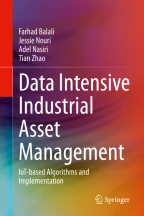
In an Internet of Things (IoT) network, things refer to a set of smart machines and devices that measure, collect, and analyze predetermined variables. Things are required to have communication abilities through a wired or wireless communication network such as the Internet to interact with each other to share the information. Communication capability is the key element in turning a smart system into a smart connected system. A smart connected system can enhance the interactions between the units as well as between human and devices.
This chapter defines different layers of an IoT network starting from device layers to business decisions. It introduces the components of the system including sensors, actuators, etc. and defines the most important roles of each component. Relationship between the components of an IoT network would be discussed in this chapter. Devices are also different in their qualities and the amount of noise or variance in measurements. Therefore, sensor selection is a critical step in making a successful smart connected system. Currently available technologies such as radio-frequency identification (RFID), cloud computing, etc. enable these components to communicate and transfer data within acceptable time and cost.
However, raw data do not reveal helpful information about the status of a system. Analytics should be performed to reveal the information, patterns, abnormalities, etc. Key performance indicators (KPIs), such as efficiency and availability, are useful to extract beneficial information. Although information at component or machine level can be applied to make low-level decisions, IoT capabilities can be further promoted by analyzing this information to develop knowledge and finally wisdom about the system using machine learning (ML) and artificial intelligence (AI) principles.
The concept of IoT is not only limited within a company and the decisions made by that organization, but IoT also governs every step of the value chain starting from suppliers, production, services, and warranty. Information sharing in a supply chain and advantages that come with it can bring more opportunities and novel business concept to make a company more successful among a pool of competitors.
This is a preview of subscription content, log in via an institution to check access.